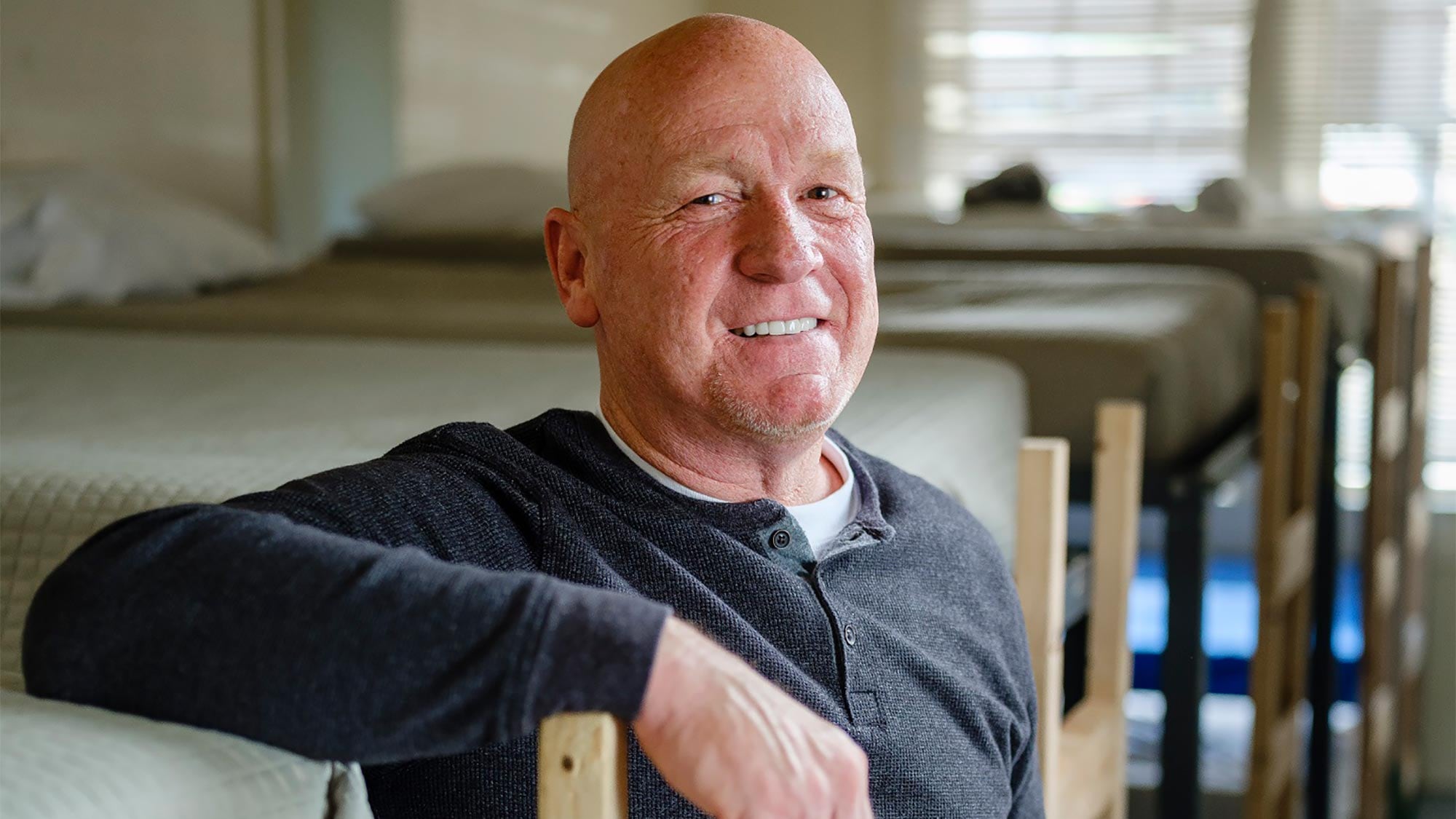When real estate magnate Jordan Schnitzer bought the Wapato Jail in 2018 and promised to revive it as a homeless shelter, some Portlanders rolled their eyes.
But not Alan Evans.
Evans, 56, is founder of a Seaside, Ore.-based homelessness outreach and re-entry program called Helping Hands. Since 2004, the organization has opened 11 emergency shelters with a total of 200 beds—mostly in cash-strapped timber counties along the Oregon Coast.
Wapato, a jail built by Multnomah County but never used, has stood empty in North Portland for nearly two decades. For years, local business leaders have viewed it as a promising site to shelter Portland's growing homeless population, even as elected officials mostly scoffed. Last October, a year after Schnitzer's $5 million purchase, he said if local governments didn't pitch in, he would demolish the jail and build a warehouse instead.
He hasn't. Instead, he's turned to Evans, who was himself homeless for more than two decades before starting Helping Hands. Together, they aim to convert the Wapato property into a 500-bed homeless shelter and addiction treatment center—no public funding necessary.
By next winter, Evans says, the seemingly cursed Wapato Jail could re-emerge with a new purpose under a new name: the Bybee Lakes Hope Center.
WW spoke with him this week about the plan.

WW: How did you first get involved with Jordan Schnitzer on this project?
Alan Evans: A little over a month ago, I was helping with a project in Clatsop County for United Way. [Sen.] Betsy [Johnson, D-Scappoose] came up to me and said, "Would you be interested in meeting Mr. Schnitzer?" She introduced me. He said, "Have you seen this facility?…I'm signing papers tomorrow for the demolition." I said, "Well, this is too bad, because there's a gigantic problem in the state of Oregon, and there's a gigantic facility that would be ideal, with a little bit of work done on it, to serve a purpose."
Then I got a call the next day. He said, "I'm sitting around the table and we're trying to figure out which contract to sign to tear the building down. Do you really believe this facility could work?" I said, "Absolutely."
What about this building attracted you to it for this project?
Years ago, we had a house in Seaside that had eight men in it. These guys would come in, they'd get an apartment, and in six months they were back at our door. What we realized was that people needed more than just a place to live. They needed help overcoming and building resilience to change things. From my experience on the street: Let's say I was living in a tent under Burnside, which I did, and I needed mental health services and I needed to get an ID. When you're in that place, all of those things seem unreachable.
So, to see a building like this where all of these resources could be provided under one roof? How is that not a fit?
What services do you plan to provide?
We would love to see an intake center, which we would run. We're looking at having three dorms in this building. People would get referred to us—referral only. We would do an intake on them and put it into our system. And then we would have mental health services on site. We would have addiction services on site. We would love to see detox services on site. We'd love to see different kinds of schooling on site. More education, more vocational training. And opportunities for job placement.
Do you have a sense of what it might cost?
Our budget stated it would take us about $1.4 million to make the changes that would need to be made to the kitchen and to the dorms for us to provide our service in there, and another $1.2 million to run it every year. We're raising about $3 million right now, and we're doing very well.
Where is that $3 million coming from?
That's coming from private donors. We've secured $1.2 million so far. The biggest donation we received was $1 million, and the smallest was $50.
Who are the donors?
You can drill me all you want, but all I can say is we need to make sure we honor our givers' [anonymity].
City code says you can't take an industrial facility and use it as a treatment center or for group living. How do those laws apply here?
There are always regulations in areas that state you can't do certain things in certain ways. But we know the city is capable of voting for us to be able to utilize this building the way we want to utilize it. We know they can vote to do that.
Do you have a sense of when this will be completed?
If we have our way, we could be up and running before next winter, which is our goal. I'm a guy who lived on the streets for 27 years, and with $40 in my pocket, I started an organization that has changed the lives of thousands of people in communities. I know when people band together to make a difference, things begin to change. I don't have a doubt in my mind we can make this work.
